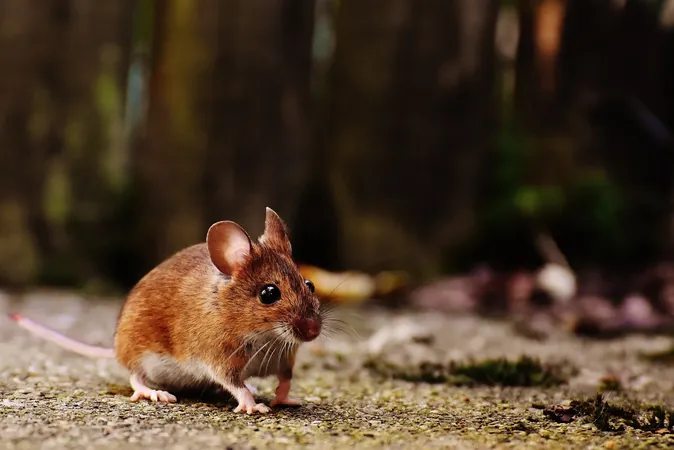
**Mind Games: How Mice Decode Social Status Using Scent!**
2025-05-19
Author: Charlotte
**A Surprising Discovery in Mouse Behavior!**
At the forefront of groundbreaking research, scientists from the Francis Crick Institute have unveiled a fascinating secret about mouse interactions: these creatures can assess social hierarchies through chemical cues, particularly scents! This groundbreaking study illustrates how mice determine their standing in relation to unfamiliar peers and smartly adjust their behavior accordingly.
**The Social Structure of Mice: More Than Meets the Eye**
Mice, much like many mammals, live within a structured social hierarchy, where dominance plays a pivotal role. This ranking system not only helps reduce conflicts but also influences mating choices. Studies have suggested that some mice might behave consistently regardless of their social encounters, relying on physical traits to gauge hierarchy. However, new evidence reveals a more complex approach—mice utilize specific chemical signals found in odors or through direct contact.
**The Test That Changed Everything**
The researchers employed an intriguing experiment involving male mice in a transparent tube. In this setup, a more submissive mouse typically retreats during encounters. By initially ranking mice within the same cage hierarchy, they then assessed the reactions of these mice towards unknown adversaries.
What they found was astonishing: unfamiliar mice could not only recognize each other's social ranks but also make crucial decisions—either to back down or assert dominance.
**Understanding Without Seeing: Shocking Results**
Testing in complete darkness revealed that the mice's rank recognition remained unaffected, indicating that physical characteristics or behavioral cues were not the primary influences. Interestingly, even after castration—removing sex hormones—mouse interactions did not change, showcasing the power of chemical cues.
**The Two Senses Behind the Magic**
A pivotal discovery was made when researchers blocked the two chemosensory pathways: the olfactory (for airborne odors) and the vomeronasal (for contact-based signals). While disabling either sense alone had no impact, both had to be compromised for the mice to lose their ability to recognize rank—revealing the need for both systems to work in tandem!
**A Glimpse Into Human Behavior**
Just like these savvy rodents, humans also navigate social landscapes by sensing and interpreting cues—be it through language, facial expressions, or fashion choices. This study opens doors to new insights into social mobility, suggesting that humans, akin to mice, can step into fresh social circles while still gauging their own rank.
**What’s Next for This Research?**
Moving forward, researchers aim to delve deeper into the brain's regions that process these social rankings, prompting decisions of escape or confrontation. Neven Borak, a lead researcher, stated, "We've revealed how mice evaluate strangers using scents, independent of previous confrontations. This is a thrilling insight into how social interactions are managed across species!"
As Jonny Kohl, head of the research group, concluded, "We’ve uncovered how mice integrate cues about dominance, making predicaments based on their relative ranks in their brains long before any aggressive or submissive actions are displayed." This groundbreaking research not only adds to our understanding of animal behavior but also mirrors the intricate social navigation of humans!









 Brasil (PT)
Brasil (PT)
 Canada (EN)
Canada (EN)
 Chile (ES)
Chile (ES)
 Česko (CS)
Česko (CS)
 대한민국 (KO)
대한민국 (KO)
 España (ES)
España (ES)
 France (FR)
France (FR)
 Hong Kong (EN)
Hong Kong (EN)
 Italia (IT)
Italia (IT)
 日本 (JA)
日本 (JA)
 Magyarország (HU)
Magyarország (HU)
 Norge (NO)
Norge (NO)
 Polska (PL)
Polska (PL)
 Schweiz (DE)
Schweiz (DE)
 Singapore (EN)
Singapore (EN)
 Sverige (SV)
Sverige (SV)
 Suomi (FI)
Suomi (FI)
 Türkiye (TR)
Türkiye (TR)
 الإمارات العربية المتحدة (AR)
الإمارات العربية المتحدة (AR)